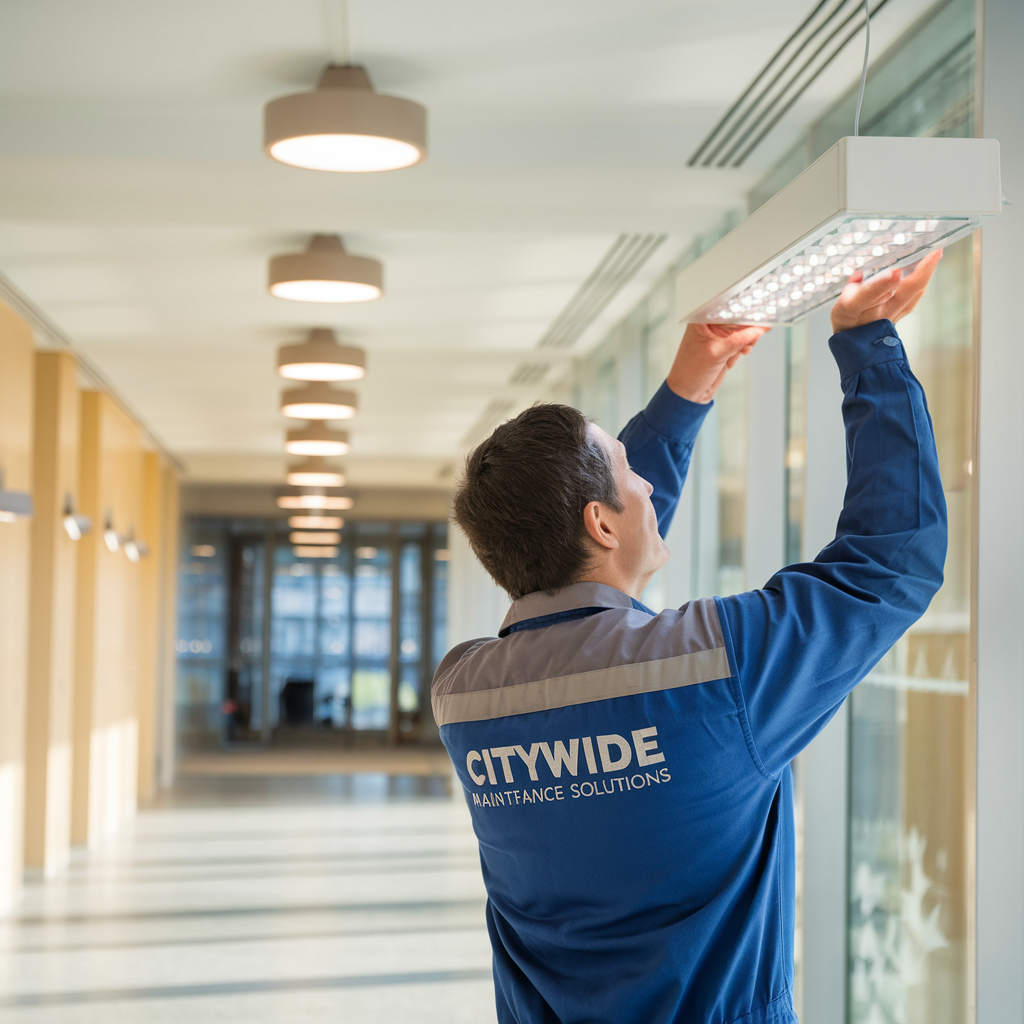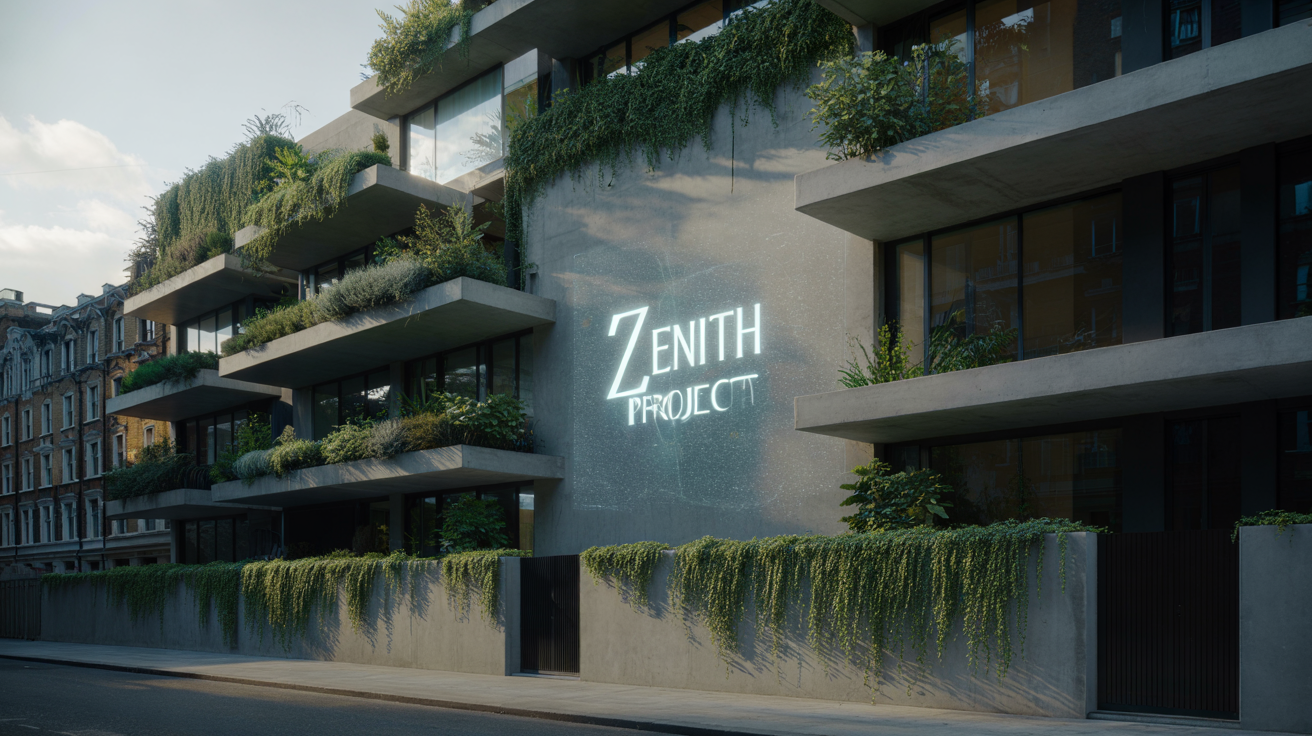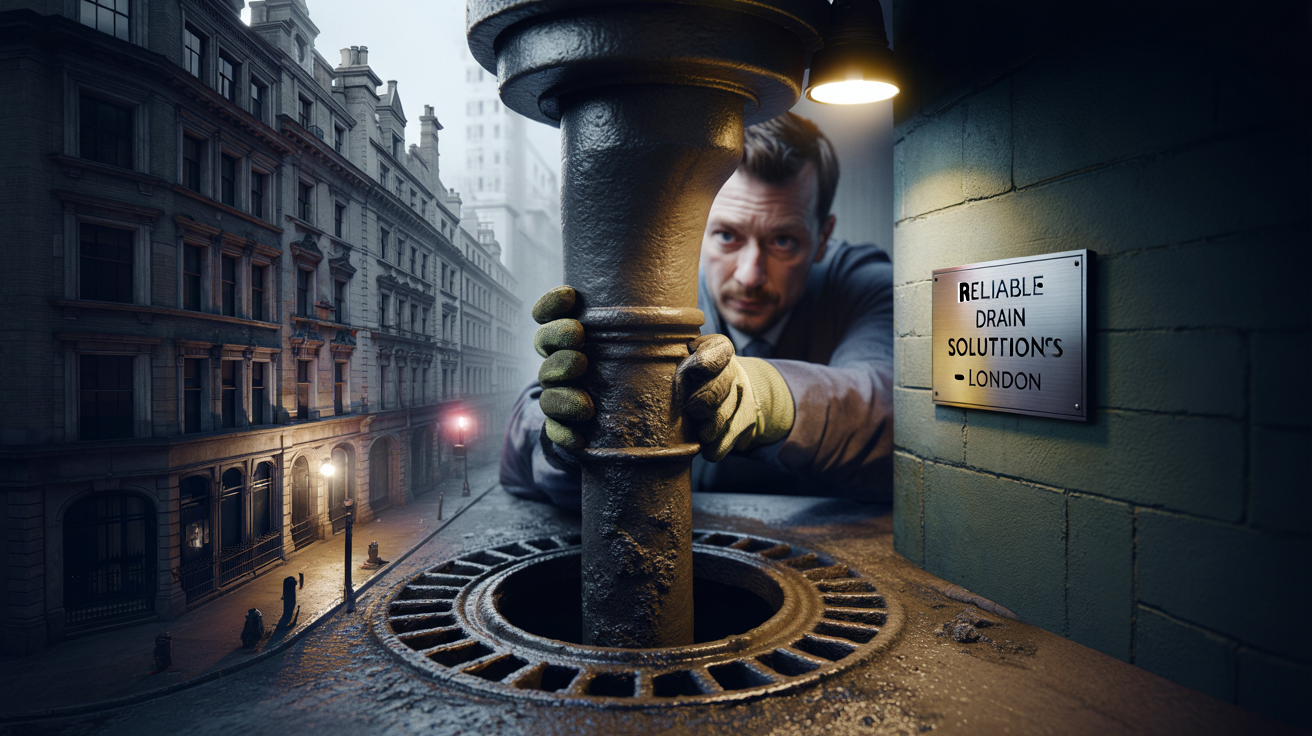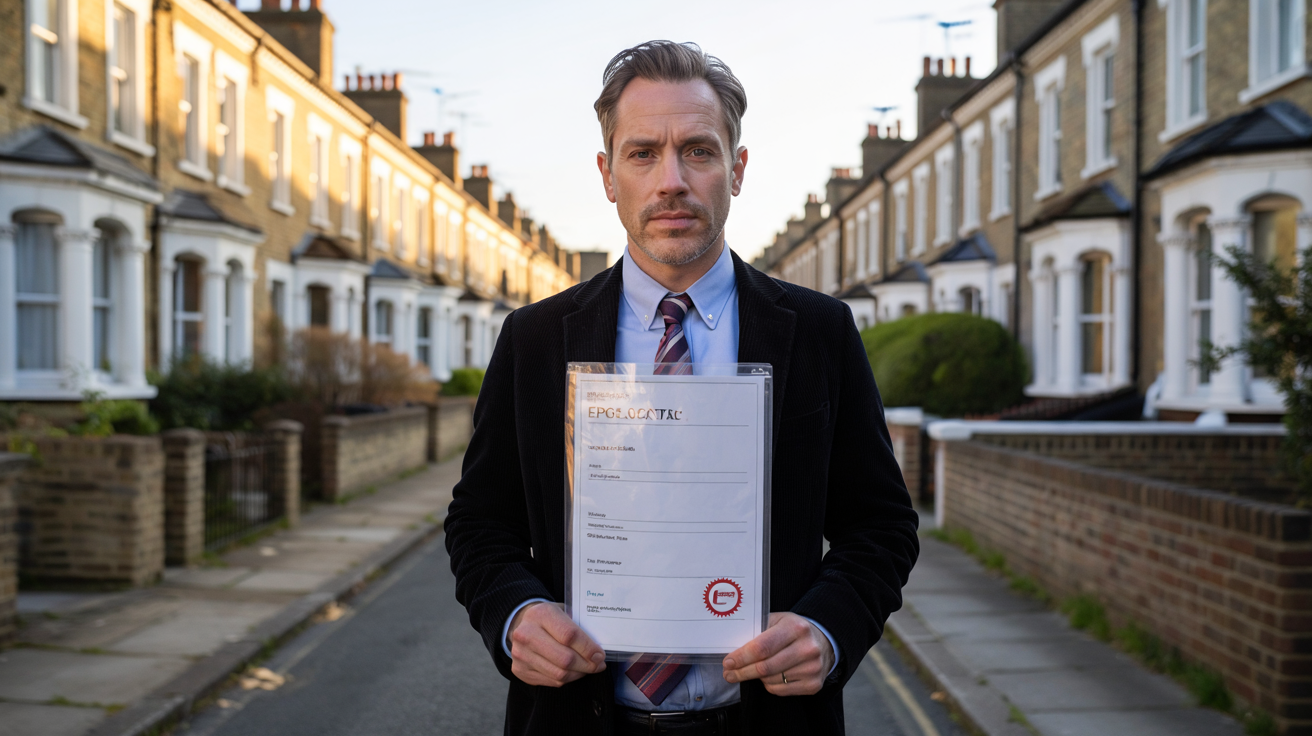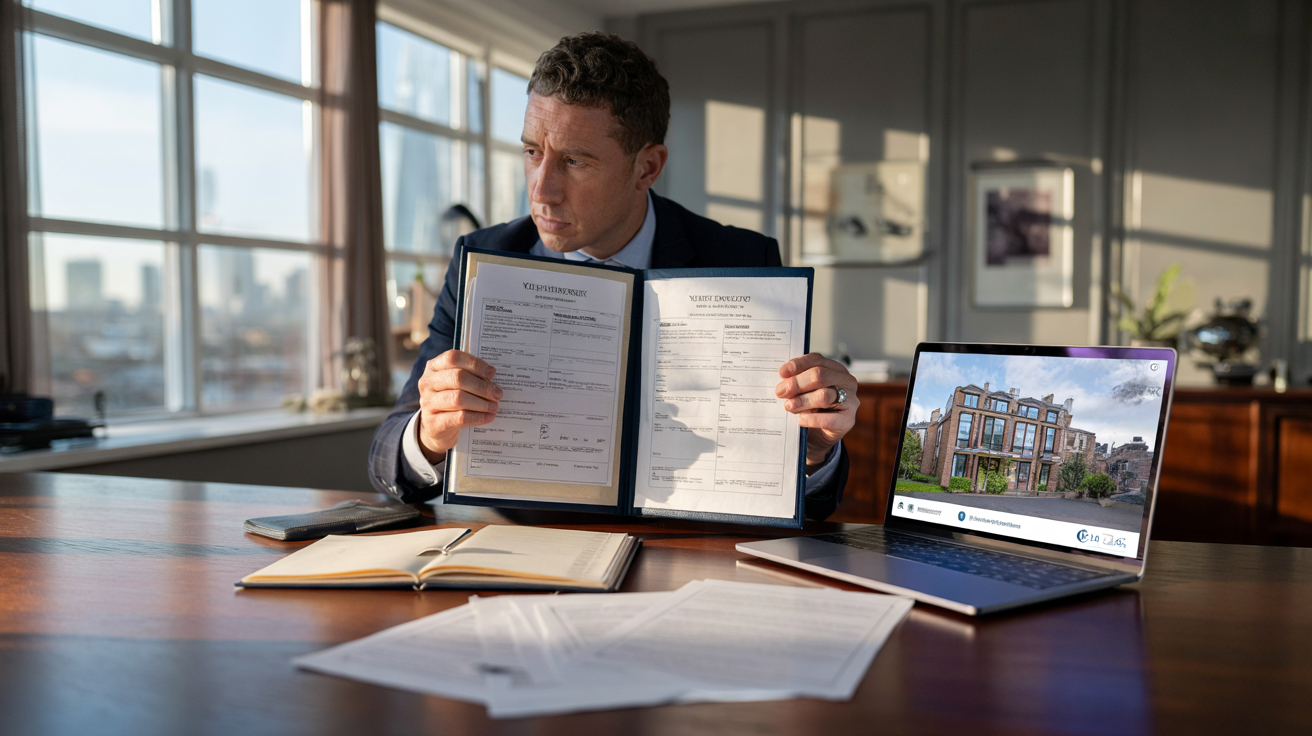Sustainable maintenance is no longer just a trend; it is a necessity for property owners looking to improve long-term value. Traditional building maintenance often leads to high energy costs, excess waste, and increased carbon emissions. These inefficiencies not only harm the environment but also reduce a property’s return on investment (ROI).
Implementing green property maintenance practices helps lower operational costs while improving tenant satisfaction. Energy consumption, water usage, and material waste can all be reduced through smart, eco-friendly strategies. Properties that embrace environmentally friendly property services are more attractive to tenants and investors alike.
Buildings account for nearly 39% of global CO2 emissions, making sustainability a priority in property management. Using recycled materials, adopting sustainable building maintenance strategies, and incorporating renewable energy in property management can significantly cut costs. The Bullitt Center in Seattle, for example, showcases how a green building can thrive by utilizing reclaimed materials and rainwater harvesting.
For both residential and commercial properties, key sustainable maintenance practices include:
- Energy-efficient property maintenance: Upgrading insulation, using LED lighting, and installing smart energy systems can lower electricity bills.
- Water conservation in property maintenance: Low-flow fixtures, rainwater collection, and greywater recycling help reduce water waste.
- Sustainable property renovations: Using durable, eco-friendly materials ensures long-term savings and minimizes future maintenance needs.
- Green retrofitting: Upgrading older buildings with modern, efficient systems improves energy performance and reduces overall emissions.
Beyond cost savings, adopting sustainable facilities management improves compliance with evolving environmental regulations. Policies like the Minimum Energy Efficiency Standards (MEES) are making sustainability a requirement rather than an option. Buildings that fail to meet these standards may face penalties or reduced market value.
Investing in green building operations and ESG property management ensures long-term financial stability and environmental responsibility. By focusing on energy efficiency, waste reduction, and sustainable materials, property owners can enhance ROI while contributing to a healthier planet.
Next, we will explore how energy-efficient maintenance strategies can further cut costs and reduce a building’s carbon footprint.
Energy-Efficient Property Maintenance: Cutting Costs While Reducing Carbon Footprint
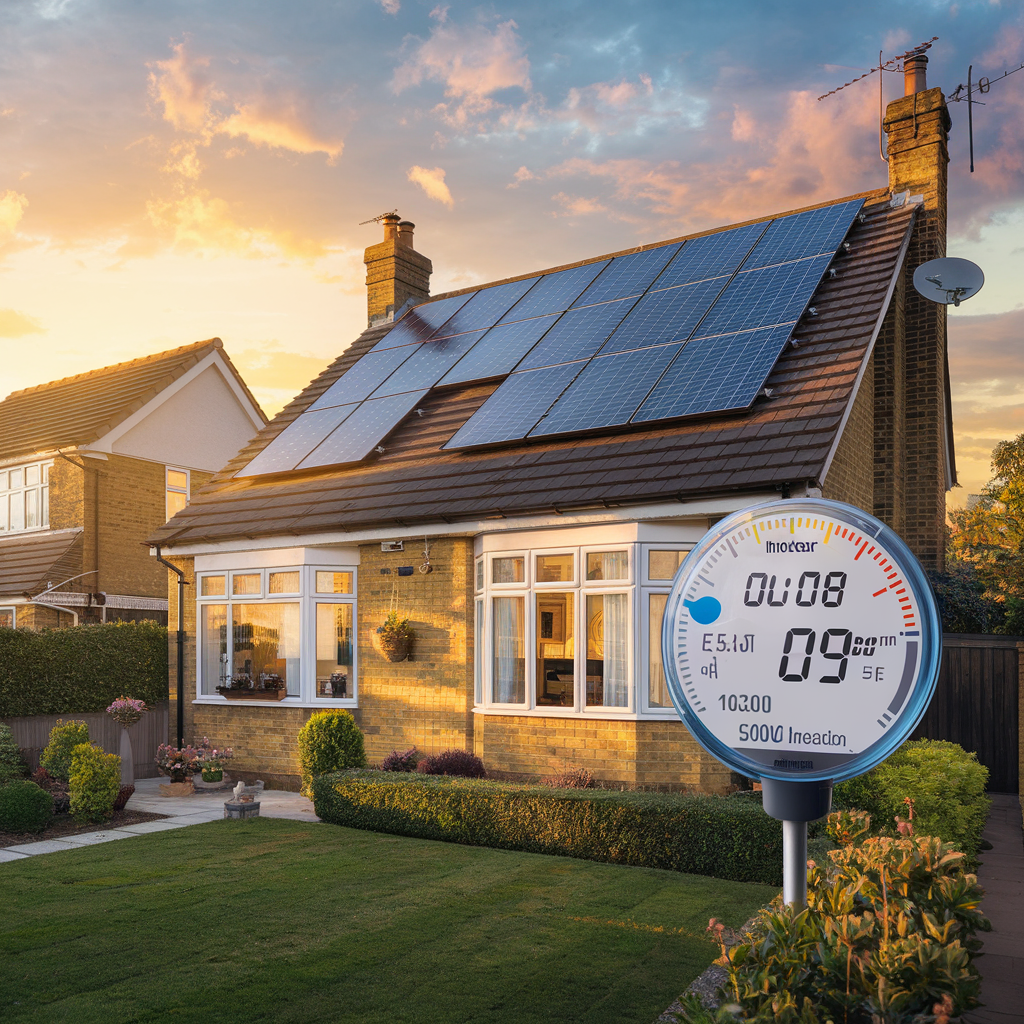 Reducing energy costs is a top priority for property owners. Traditional buildings waste significant amounts of energy due to outdated systems and inefficient maintenance practices. This not only results in higher utility bills but also increases a building’s carbon emissions.
Reducing energy costs is a top priority for property owners. Traditional buildings waste significant amounts of energy due to outdated systems and inefficient maintenance practices. This not only results in higher utility bills but also increases a building’s carbon emissions.
Energy-efficient property maintenance offers a solution by lowering energy use and improving building performance. Simple upgrades such as better insulation, modern HVAC systems, and smart lighting can dramatically reduce consumption.
Implementing sustainable building maintenance practices benefits both finances and the environment. Some key strategies include:
- Smart Energy Systems: Automated lighting, occupancy sensors, and programmable thermostats optimize energy use without compromising comfort.
- Efficient HVAC Management: Regular servicing and the use of energy-efficient equipment help reduce heating and cooling costs.
- Renewable Energy Sources: Solar panels and wind energy integration allow buildings to generate their own power, cutting reliance on the grid.
- LEED Certification for Building Maintenance: Meeting green building standards ensures regulatory compliance and increases property value.
According to industry reports, energy-efficient buildings consume up to 50% less energy compared to traditional structures. This makes investing in green building operations a smart financial choice.
Tenants are also increasingly favoring properties with eco-friendly property management strategies. Spaces with lower energy costs and improved indoor air quality contribute to higher occupancy rates and tenant retention.
By prioritizing sustainable property maintenance, property owners can maximize ROI while aligning with evolving environmental regulations. The result is lower operating costs, higher property values, and a reduced carbon footprint.
Beyond energy efficiency, another critical aspect of sustainable facilities management is resource conservation. The next step involves optimizing water conservation in property maintenance and reducing material waste.
Water Conservation and Waste Reduction in Property Management
 Water conservation in property maintenance is essential for reducing costs and ensuring long-term sustainability. Many properties waste thousands of liters of water every year due to leaks, inefficient fixtures, and outdated plumbing systems. This not only drives up utility bills but also places unnecessary strain on local water supplies.
Water conservation in property maintenance is essential for reducing costs and ensuring long-term sustainability. Many properties waste thousands of liters of water every year due to leaks, inefficient fixtures, and outdated plumbing systems. This not only drives up utility bills but also places unnecessary strain on local water supplies.
Simple upgrades and proactive maintenance can significantly cut water waste. Installing low-flow faucets, dual-flush toilets, and sensor-based fixtures ensures water is used efficiently. Routine inspections help identify leaks before they lead to costly damage.
Beyond conservation, proper waste reduction in property management minimizes the environmental impact of building operations. Construction debris, disposable materials, and inefficient disposal practices lead to excessive waste. A shift toward a circular economy in property maintenance can reduce this burden by reusing materials and implementing responsible disposal strategies.
- Greywater Recycling: Reusing water from sinks and showers for irrigation or flushing reduces unnecessary freshwater consumption.
- Rainwater Harvesting: Collecting and storing rainwater for landscaping and cleaning lowers reliance on municipal water sources.
- Sustainable Landscaping: Using drought-resistant plants and permeable surfaces reduces outdoor water use and runoff.
- Eco-Friendly Cleaning: Choosing green cleaning services for properties ensures less pollution enters the water system.
Properties that adopt these strategies benefit from lower operational costs and improved environmental performance. Many regulatory bodies now mandate water efficiency, making these upgrades necessary to remain compliant.
Citywide Maintenance Solutions specializes in implementing environmentally friendly property services that optimize water use and waste management. Our team ensures that properties meet sustainability standards while cutting unnecessary expenses.
Advancements in green building operations now go beyond water and waste management. Smart technology and renewable energy in property management are transforming how buildings function, improving efficiency and sustainability.
Innovations in Green Building Operations: Smart Technology and Renewable Energy
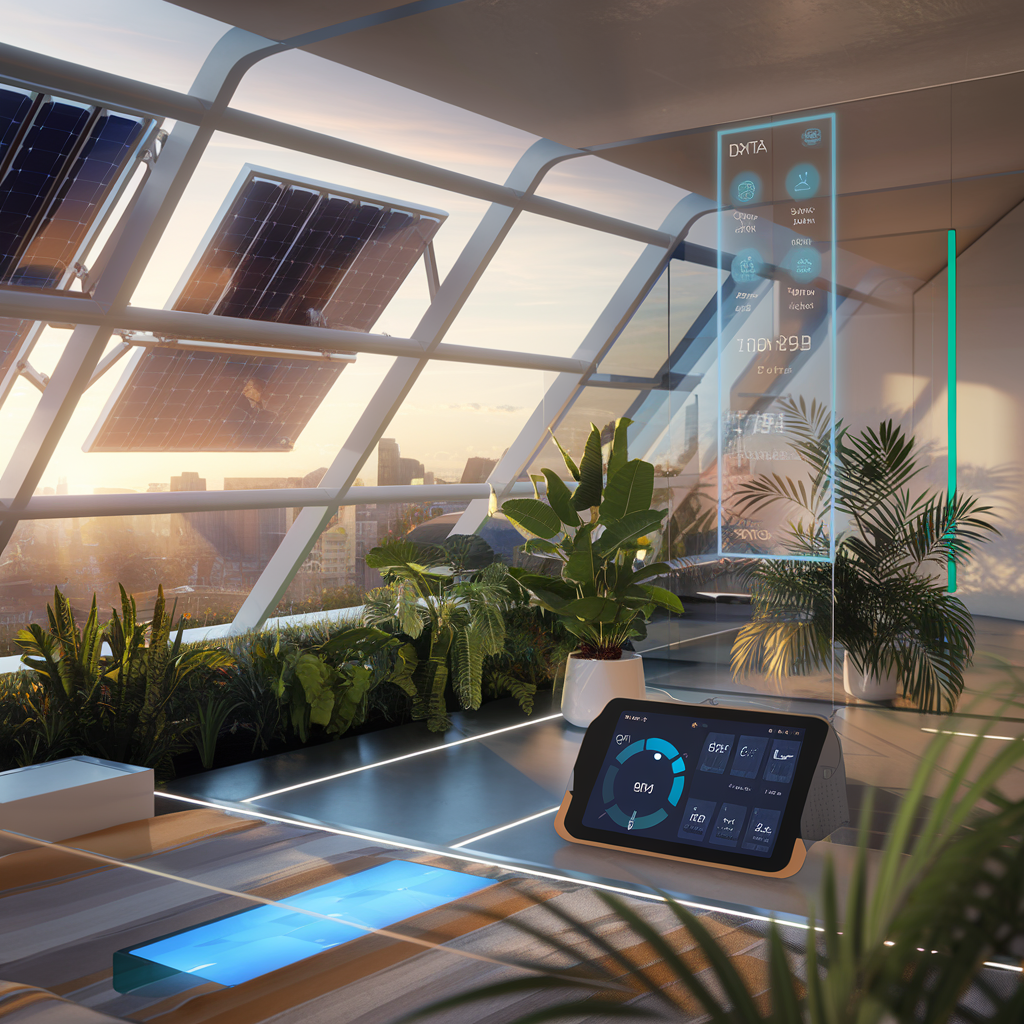 The demand for smarter, more sustainable property maintenance solutions is growing. Traditional building systems waste energy and rely on outdated resources, driving up operating costs. With advancements in green building operations, property owners can now reduce their expenses while improving efficiency.
The demand for smarter, more sustainable property maintenance solutions is growing. Traditional building systems waste energy and rely on outdated resources, driving up operating costs. With advancements in green building operations, property owners can now reduce their expenses while improving efficiency.
Smart technologies are transforming how buildings manage energy and resources. Automated lighting, intelligent HVAC systems, and predictive maintenance sensors reduce unnecessary energy consumption. These innovations lower utility bills and improve a property’s environmental impact.
Modern buildings also use renewable energy in property management to reduce reliance on fossil fuels. Solar panels, wind energy systems, and battery storage solutions allow buildings to generate their own power. This not only cuts costs but also ensures compliance with evolving environmental regulations.
- AI-Driven Energy Management: Smart grids and AI-powered analytics optimize energy use, adjusting based on demand and real-time data.
- Daylight Harvesting Systems: These sensors adjust artificial lighting, reducing energy waste by utilizing natural daylight.
- Green Retrofitting: Upgrading older buildings with smart thermostats, insulated windows, and energy-efficient roofing enhances sustainability.
- Battery Storage Solutions: Storing excess solar energy ensures buildings remain self-sufficient even during peak demand times.
These sustainable facilities management strategies make properties more attractive to tenants and investors. Energy-efficient buildings lower operational costs while reducing their carbon footprint. This creates long-term savings and enhances a property’s value.
Ensuring consistent improvement requires a structured approach to implementing sustainable maintenance strategies. By integrating smart solutions with ongoing maintenance practices, property owners can achieve long-term environmental and financial benefits.
Implementing Sustainable Maintenance Strategies for Long-Term Value
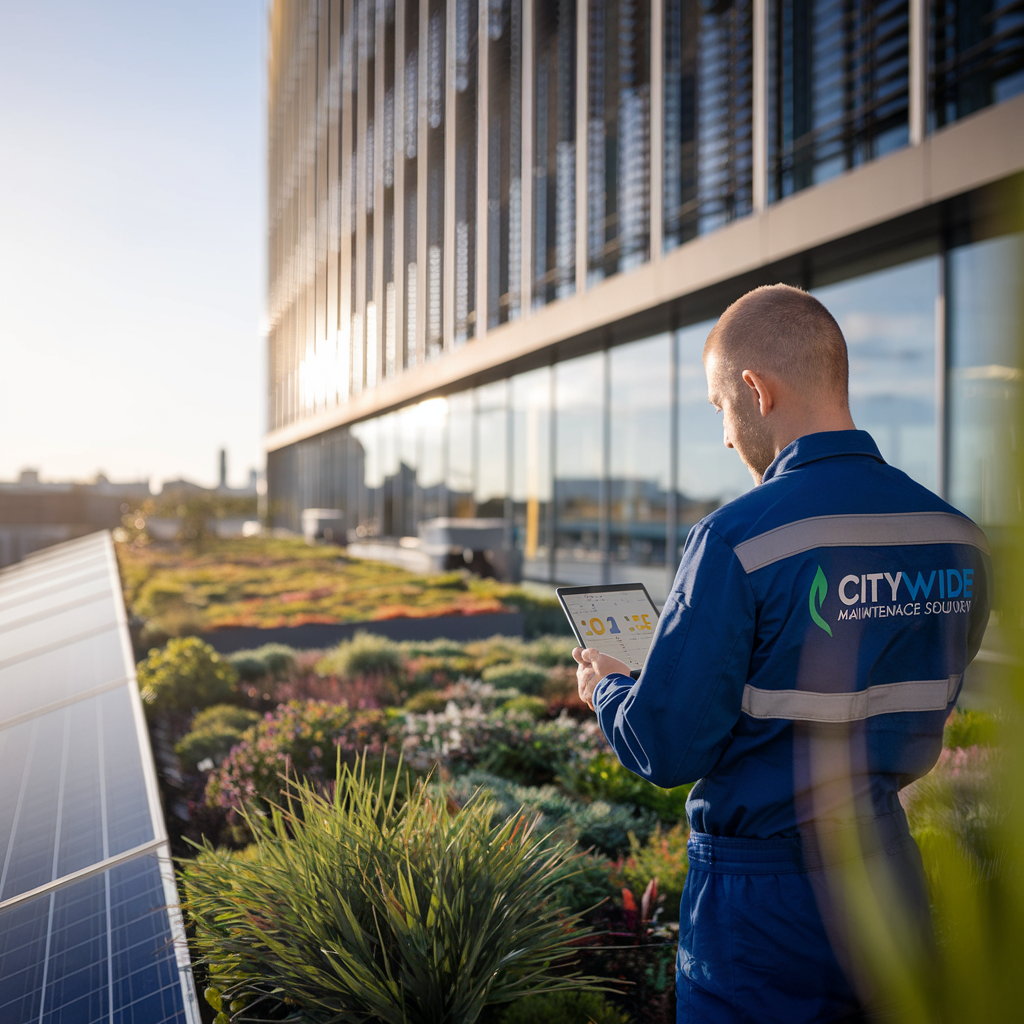 To achieve long-term value, property owners need reliable and cost-effective sustainable maintenance strategies. A short-term approach can lead to rising expenses, inefficient energy use, and higher repair costs. Instead, proactive planning ensures that buildings stay efficient, compliant, and attractive to tenants.
To achieve long-term value, property owners need reliable and cost-effective sustainable maintenance strategies. A short-term approach can lead to rising expenses, inefficient energy use, and higher repair costs. Instead, proactive planning ensures that buildings stay efficient, compliant, and attractive to tenants.
Implementing sustainable property maintenance begins with a structured approach. Regular assessments and strategic upgrades help properties stay ahead of regulations while reducing waste and operational costs. Key strategies include:
- Preventive Maintenance: Routine inspections for HVAC systems, plumbing, and lighting prevent costly repairs and extend equipment lifespan.
- Smart Energy Monitoring: Real-time tracking helps identify energy waste and optimize consumption.
- Waste Reduction in Property Management: Recycling programs and responsible disposal of materials minimize environmental impact.
- Water Conservation in Property Maintenance: Installing low-flow fixtures and fixing leaks promptly cuts unnecessary water use.
Investing in green retrofitting further improves efficiency. Upgrading insulation, switching to motion-sensor lighting, and integrating renewable energy in property management significantly reduce expenses. These modifications enhance property value and comply with sustainability standards.
Citywide Maintenance Solutions specializes in tailored eco-friendly property management. By incorporating sustainable facilities management solutions, we help property owners lower costs while maintaining high-quality standards.
With regulatory pressure increasing, a long-term strategy ensures compliance and maximizes return on investment. Smart planning today leads to reduced costs, stronger tenant retention, and increased property value.
Next, we’ll examine the financial and environmental benefits of sustainable property maintenance and why it is a sound investment for property owners.
The Business Case for Sustainable Property Maintenance: Maximizing Financial and Environmental Benefits
Adopting sustainable property maintenance strategies is not just good for the environment—it is a smart financial decision. Property owners who integrate green property maintenance methods benefit from lower operating costs, increased asset value, and higher tenant retention.
Buildings with lower energy and water consumption cost less to operate. By implementing energy-efficient property maintenance, property managers reduce long-term expenses associated with heating, cooling, and lighting. Smart energy systems, LED lighting, and improved insulation all contribute to significant savings over time.
In addition to lower costs, sustainability enhances property desirability. Businesses and tenants actively seek rentals with eco-friendly property management features such as efficient appliances, sustainable landscaping, and improved indoor air quality. A property that aligns with environmental standards commands higher rental rates and longer lease agreements.
Regulatory compliance is another financial advantage. Governments are imposing stricter environmental policies, including energy efficiency standards and waste reduction mandates. Properties that fail to meet these requirements may face penalties or devaluation. Proactively implementing sustainable facilities management ensures compliance and avoids unnecessary financial risks.
Sustainability also supports long-term asset preservation. Investing in green retrofitting and durable, low-maintenance materials reduces repair costs and prolongs a building’s lifespan. Features like solar panels, rainwater collection systems, and energy-efficient HVAC reduce dependency on external utilities while enhancing resilience against rising energy prices.
Citywide Maintenance Solutions helps property owners integrate environmentally friendly property services that maximize financial and environmental benefits. Our team ensures that properties remain efficient, compliant, and attractive to tenants.
By prioritizing sustainable property investments, property owners secure long-term savings while contributing to a greener future. A well-maintained, eco-friendly property is an investment that pays off in both profitability and sustainability.

